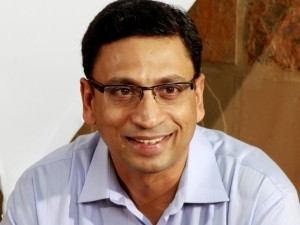
Mobility and cloud are disruptive forces in the market today and the Web has completely disrupted the value chain. Markets are transforming, and organisations have the choice to disrupt or be disrupted. Reacting responsibly to the disruption by investing in purposeful innovation, where customers have flexibility and choice, will give your business a competitive edge.
Having the courage to disrupt your business - before being disrupted by a market is not necessarily easy, because it means taking risks, but it is about having belief in your vision and strategy and ensuring that everything you will be doing in the long term will be effective.
Disrupting is also about taking a responsible leadership position and ensuring you move at the speed of your customers while innovating. There is no sense in just developing a good product; you need to invest in purposeful innovation, says Himanshu Palsule, Chief Technology Officer at Sage North America.
At Sage, we have leveraged disruption as an opportunity to re-imagine the Sage ERP 300 product. In the future, we will not only focus on mobility and cloud, but also modernising the user interface for an improved customer experience. In fact, Sage ERP 300 has been chosen as one of the select small to medium business (SME) products worldwide that Sage is investing in to effectively position it as a competitive force in the cloud.
So, where is this disruption coming from?
The mobility tsunami is reaching all global shores. There will be 1 billion mobile devices in this world by 2015, of which 140 million are going to be tablets. Mobility is driving a new cultural dynamic and is allowing business to be conducted anywhere, anytime. InSouth Africatoday, there is a 135% mobile penetration, which means on average, 1.4 devices per consumer. The market's Internet penetration is 41%, with a 140% Internet user growth, and South Africans will contribute 400 million dollars to cloud revenue by 2017. This indicates that the South African market is ready for disruption in mobility and cloud.
React proactively to disruptive changes: innovate responsibly
Organisations have to be prepared for the disruption. They need to be thinking cloud mobility, software as a service and reliable cloud infrastructure.
What does cloud mean for the customer in the ERP ecosystem? Cloud gives customers flexibility and choice. For example, flexibility in how they purchase, where they access, how they implement (in the cloud or on-premises) and a choice in pricing (upfront payment or subscription). It also provides for an unprecedented upgrade experience and complete flexibility in terms of support (ie, Internet, chat or 24/7 telephone support).
What are the benefits of mobility for the small and medium business? Mobility is inspired by a changing connected world. Customers want mobility within the ERP ecosystem because it provides for: superior customer service for their customers; faster movement of information; getting paid faster; significantly increased employee productivity and satisfaction; as well as reduced costs.
At Sage, we have therefore completely re-imagined the Sage ERP 300 product. Our business is not just about software products - we harness technology to support the success of millions of small and medium-sized companies and we will always stand for that ultimate customer experience. Sage ERP 300 has been chosen as one of the select SME products worldwide that Sage is investing in to effectively position it as a competitive force in the cloud. The reason for this was the product's ability globally to be scaled, functionality wise and into the cloud.
The re-imagined Sage ERP 300 product is based on five pillars: usability, mobility, cloud, look and feel and functionality, and our key focus for now is:
* A Sage 300 Online strategy
* Three mobile services: Sage Mobile Sales, Sage Mobile Service, Sage Billing and Payment
* Enhancements in terms of user experience, improved integration and product updates
We realised we had to take a very balanced approach with innovation. It had to take into consideration on-premises and cloud, both working together. The innovation also had to be from a customer perspective - solving their problems. In the end it is about staying ahead of the competition, planning for the reality of disruptive forces, innovatively and responsibly.
Share
Sage ERP Africa
Sage ERP Africa is a provider of business management solutions, including financial, distribution, service management, retail, warehouse management, project costing, manufacturing and CRM, to the mid-range market. Sage ERP solutions are delivered to 130 countries exclusively through a global network of solution providers, including over 150 throughout Africa. The Sage ERP Africa product line includes: Sage ERP X3, Sage 300 ERP (formerly Sage ERP Accpac), Sage CRM, Sage 300 ERP Retail and Sage ERP X3 Retail as well as Sage third-party partner solutions. With a choice of languages, currencies, locations and legislations - Sage ERP offers efficient multi-company and multinational solutions.
Sage
Sage provides small and medium-sized organisations with a range of easy-to-use, secure and efficient business management software and services - from accounting and payroll, to enterprise resource planning, customer relationship management and payments. Sage's customers receive continuous advice and support through its global network of local experts to help them solve their business problems, giving them the confidence to achieve their business ambitions. Formed in 1981, Sage was floated on the London Stock Exchange in 1989 and entered the FTSE 100 in 1999. Sage has over 6 million customers and more than 12 700 employees in 24 countries covering the UK & Ireland, mainland Europe, North America, South Africa, Australia, Asia and Brazil. For further information, please visit www.sage.com.
Editorial contacts